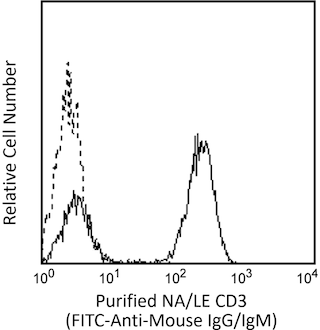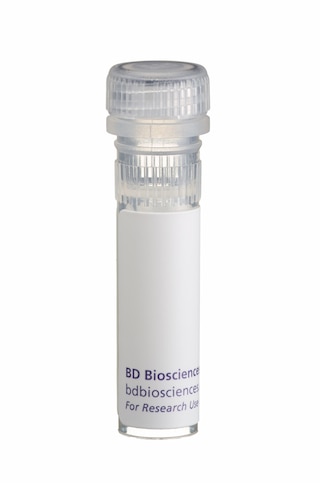-
Reagents
- Flow Cytometry Reagents
-
Western Blotting and Molecular Reagents
- Immunoassay Reagents
-
Single-Cell Multiomics Reagents
- BD® OMICS-Guard Sample Preservation Buffer
- BD® AbSeq Assay
- BD® OMICS-One Immune Profiler Protein Panel
- BD® Single-Cell Multiplexing Kit
- BD Rhapsody™ ATAC-Seq Assays
- BD Rhapsody™ Whole Transcriptome Analysis (WTA) Amplification Kit
- BD Rhapsody™ TCR/BCR Next Multiomic Assays
- BD Rhapsody™ Targeted mRNA Kits
- BD Rhapsody™ Accessory Kits
-
Functional Assays
-
Microscopy and Imaging Reagents
-
Cell Preparation and Separation Reagents
-
- BD® OMICS-Guard Sample Preservation Buffer
- BD® AbSeq Assay
- BD® OMICS-One Immune Profiler Protein Panel
- BD® Single-Cell Multiplexing Kit
- BD Rhapsody™ ATAC-Seq Assays
- BD Rhapsody™ Whole Transcriptome Analysis (WTA) Amplification Kit
- BD Rhapsody™ TCR/BCR Next Multiomic Assays
- BD Rhapsody™ Targeted mRNA Kits
- BD Rhapsody™ Accessory Kits
- United States (English)
-
Change country/language
Old Browser
This page has been recently translated and is available in French now.
Looks like you're visiting us from {countryName}.
Would you like to stay on the current country site or be switched to your country?


.png)

Expression of IL-4 by stimulated human peripheral blood mononuclear cells (PBMC). Human PBMC were stimulated with soluble anti-human CD3 antibody (1 µg/ml; Cat. No. 555329), recombinant human IL-2 (10 ng/ml, Cat. No. 554603) and recombinant human IL-4 (10 ng/ml; Cat. No. 554605) for 2 days. The cells were subsequently cultured in medium containing IL-2 and IL-4 for 3 days. Finally, the cells were harvested and stimulated for 6 h with PMA (Sigma) and calcium ionophore A23187 (Sigma) in the presence of BD GolgiStop™ (Cat. No, 554724). The cells were harvested, stained with FITC anti-CD4 (Cat. No. 555346) fixed, permeabilized, and subsequently stained with 0.05 µg of APC-rat anti-human IL-4 antibody (APC-MP4-25D2, Cat. No. 554486) by using BD Biosciences Pharmingen's staining protocol (left panel). To demonstrate specificity of staining, the binding of APC-MP4-25D2 antibody was blocked by preincubation of the fixed/permeabilized cells with unlabelled MP4-25D2 antibody (2.5 µg, Cat. No. 554482; right panel) prior to staining. The quadrant markers for the bivariate dot plot were set based on the autofluorescence controls and verified using unlabelled antibody blocking controls. This APC-conjugated reagent can be used in any flow cytometer equipped with a a dye, HeNE or red diode laser. These include the dual laser BD FACStarPLUS™, BD FACSVantage™ or BD FACSCalibur.™
.png)

BD Pharmingen™ APC Rat Anti-Human IL-4
.png)
Regulatory Status Legend
Any use of products other than the permitted use without the express written authorization of Becton, Dickinson and Company is strictly prohibited.
Preparation And Storage
Recommended Assay Procedures
The APC-conjugated MP4-25D2 antibody can be used for multicolor immunofluorescent staining and flow cytometric analysis to identify and enumerate IL-4-producing cells within mixed cell populations (see image, left panel). For optimal immunofluorescent staining for flow cytometric analysis, this antibody should be titrated (≤ 0.20 µg mAb/million cells). For specific methodology, please visit the protocols section or chapter on intracellular staining in the Immune Function Handbook, both of which are posted on our web site, www.bdbiosciences.com.
A useful control for demonstrating specificity of staining is the following: pre-block the fixed/permeabilized cells with unlabelled MP4-25D2 antibody (Cat. No. 554482) prior to staining. The intracellular cytokine staining technique and use of blocking controls are described in detail by
C. Prussin and D. Metcalfe. A suitable rat IgG1 isotype control for assessing the level of background staining on paraformaldehyde-fixed/saponin-permeabilized mouse and human cells is APC-R3-34 immunoglobulin (Cat. No. 554686); use at comparable concentrations to antibody of interest (eg, ≤0.20 µg mAb/1 million cells).
Product Notices
- Since applications vary, each investigator should titrate the reagent to obtain optimal results.
- Please refer to www.bdbiosciences.com/us/s/resources for technical protocols.
- Caution: Sodium azide yields highly toxic hydrazoic acid under acidic conditions. Dilute azide compounds in running water before discarding to avoid accumulation of potentially explosive deposits in plumbing.
Companion Products





The MP4-25D2 monoclonal antibody specifically binds to Interleukin-4 (IL-4). IL-4 is also known as Lymphocyte stimulatory factor 1, B cell stimulatory factor 1 (BSF-1), or B cell growth factor 1 (BCGF-1). IL-4 is produced by activated T cells, basophils, and mast cells. IL-4 is a multifunctional cytokine and growth factor that affects a variety of different target cell types. IL-4 can costimulate T cell proliferation and survival, as well as help drive Th2-like cell differentiation and effector functions. It costimulates B cell proliferation and survival, and can help B cells differentiate into IgG4- or IgE-producing cells. IL-4 can also diminish the proinflammatory functions of monocytes and macrophages. IL-4 exerts its biological effects by binding with high affinity to cell surface CD124 (IL-4Rα chain). CD124 forms signaling IL-4 receptor complexes with either CD132/common γ chain or CD213a1/IL-13Rα1 to form either Type I or Type II IL-4 Receptor complexes, respectively. The immunogen used to generate the MP4-25D2 hybridoma was purified recombinant human IL-4. This is a neutralizing antibody. The MP4-25D2 antibody has been reported to crossreact with IL-4 from rhesus monkeys. The use of the MP4-25D2 antibody for epitope mapping of human IL-4 has been described.
This antibody is routinely tested by flow cytometric analysis. Other applications were tested at BD Biosciences Pharmingen during antibody development only or reported in the literature.

Development References (5)
-
Abrams JS, Roncarolo MG, Yssel H, Andersson U, Gleich GJ, Silver JE. Strategies of anti-cytokine monoclonal antibody development: immunoassay of IL-10 and IL-5 in clinical samples. Immunol Rev. 1992; 127:5-24. (Clone-specific: ELISA, Neutralization). View Reference
-
Chretien I, Van Kimmenade A, Pearce MK, Banchereau J, Abrams JS. Development of polyclonal and monoclonal antibodies for immunoassay and neutralization of human interleukin-4. J Immunol Methods. 1989; 117(1):67-71. (Clone-specific: ELISA, Neutralization). View Reference
-
Jung T, Schauer U, Rieger C, et al. Interleukin-4 and interleukin-5 are rarely co-expressed by human T cells. Eur J Immunol. 1995; 25(8):2413-2416. (Clone-specific: Flow cytometry). View Reference
-
Prussin C, Metcalfe DD. Detection of intracytoplasmic cytokine using flow cytometry and directly conjugated anti-cytokine antibodies. J Immunol Methods. 1995; 188(1):117-128. (Methodology: IC/FCM Block). View Reference
-
Ramanathan L, Ingram R, Sullivan L, et al. Immunochemical mapping of domains in human interleukin 4 recognized by neutralizing monoclonal antibodies. Biochemistry. 1993; 32(14):3549-3556. (Clone-specific: Neutralization). View Reference
Please refer to Support Documents for Quality Certificates
Global - Refer to manufacturer's instructions for use and related User Manuals and Technical data sheets before using this products as described
Comparisons, where applicable, are made against older BD Technology, manual methods or are general performance claims. Comparisons are not made against non-BD technologies, unless otherwise noted.
For Research Use Only. Not for use in diagnostic or therapeutic procedures.